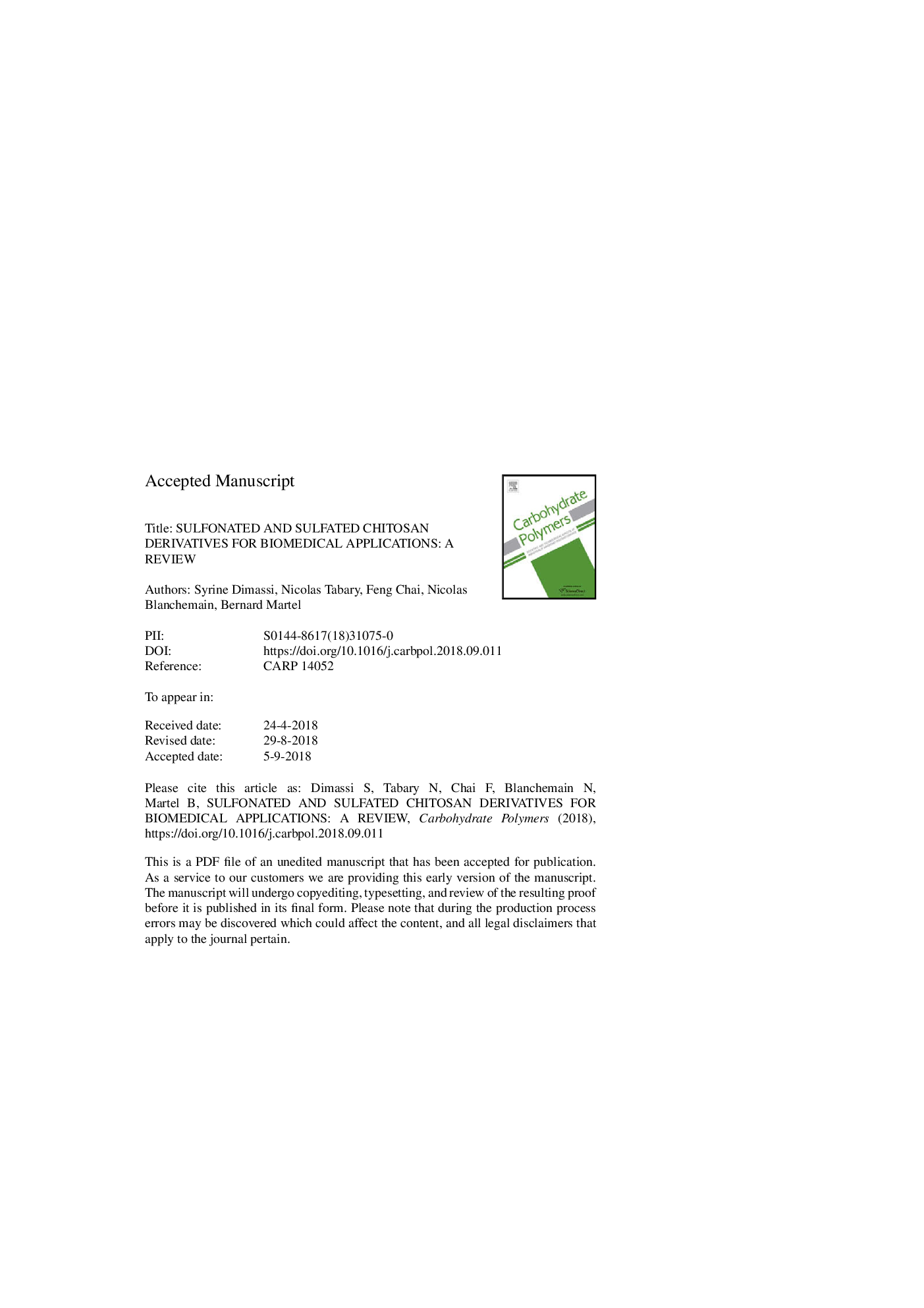| Article ID | Journal | Published Year | Pages | File Type |
|---|---|---|---|---|
| 10141274 | Carbohydrate Polymers | 2018 | 36 Pages |
Abstract
From 20th century, chitosan, a natural polysaccharide, has received much attention for use in biomedical applications thanks to its remarkable properties, such as biodegradability, biocompatibility, hemostasis and antibacterial activity. Over the last decades, many researchers have attempted to generate new chitosan derivatives-based biomaterials though chemical modifications, especially through sulfonation or sulfation reactions in order to tailor the physicochemical and biochemical properties. Due to the presence of residual amino groups, the generated polyampholytic derivatives are characterized by convenient biological properties, such as antioxidation, antiviral activity, anticoagulation and bone regeneration, expanding their application scope. This paper provides an overview of the strategies used to chemically modify chitosan by introduction of sulfonate groups on chitosan backbone, focusing on various sulfonating or sulfating agents used and substitution regioselectivity, and highlights their applications in biomedical field.
Keywords
ECMbFGDDPHDDALPLLMWHhMSCGAGLMWMICAPTT2,2-diphenyl-1-picrylhydrazylBSAROSbovine serum albuminALPAlkaline phosphataseAIDSGiant cell tumor of boneMinimum inhibitory concentrationDegree of deacetylationRegioselectivityactivated partial thromboplastin timethrombin timeprothrombin timehuman mesenchymal stem cellSulfationSulfonationLipoprotein lipaseExtracellular matrixBMPBone tissue engineeringLow molecular weight heparinMolecular weightlow molecular weightBTEHIV-1Human immunodeficiency virus type 1Bone morphogenetic proteinPolyampholyteBiomedical applicationChitosanGlycosaminoglycanReactive oxygen species
Related Topics
Physical Sciences and Engineering
Chemistry
Organic Chemistry
Authors
Syrine Dimassi, Nicolas Tabary, Feng Chai, Nicolas Blanchemain, Bernard Martel,
